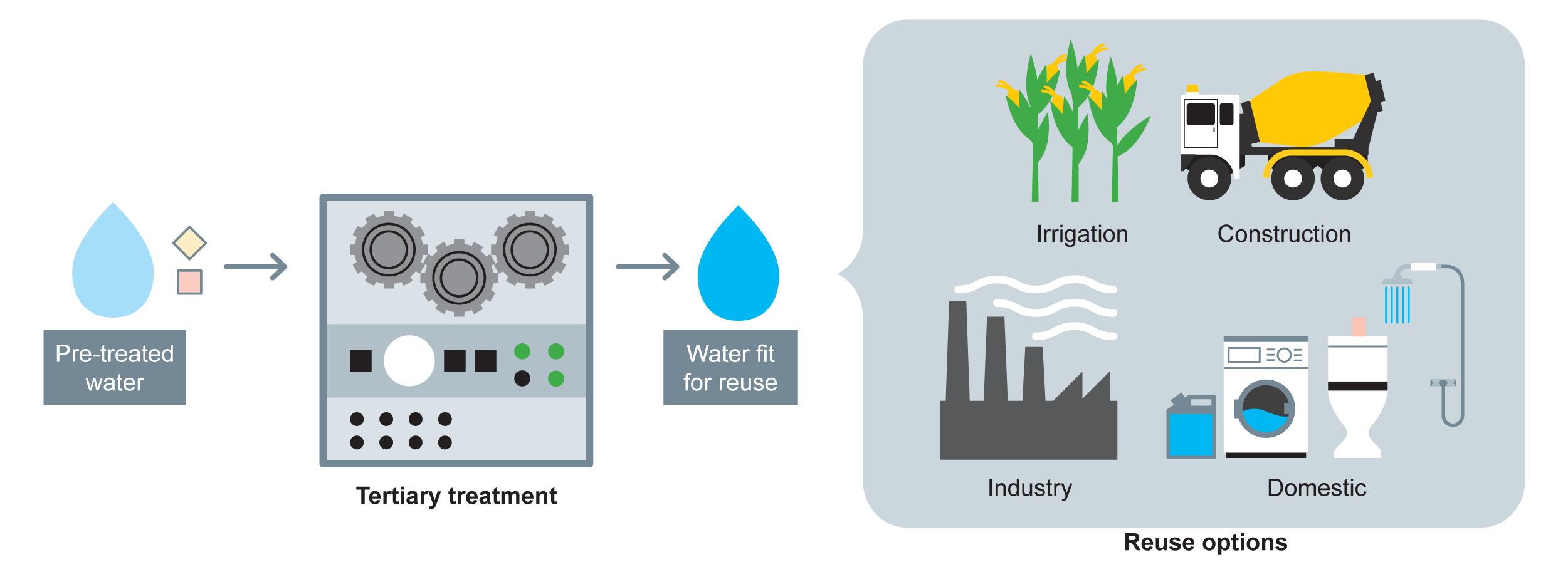

The quality of the in LOTUSHR produced waters is the key aspect: it dictates the purpose for which the water can be reused safely. Our aim is to develop quality guidelines and advanced water treatment steps for the healthy reuse of the water produced within the LOTUSHR project. By relating the health risks of the produced water qualities to the quality needed for different reuse purposes, a treatment scheme can be formulated that ensures safe reusable water.

The urban waste streams contain different contaminants such as organics, nutrients, heavy metals, pathogens and micro pollutants (antibiotics, hormones, pesticides etc.). In our research we use different target contaminants to monitor their survival and behaviour in LOTUSHR technologies. This information on how water is reused, will be used in Health Impact Assessments. The development of additional treatments steps will ensure that water quality matches with its intended use. These steps are based on advanced oxidation, membrane technology or UV based systems.
Due to extensive domestic and industrial discharges, the Barapullah drain sewage contains high levels of contaminants such as organics, nutrients, heavy metals (mercury, zinc, iron, etc.), organic micro pollutants (pesticides, antibiotics and personal hygiene products) and (antibiotic resistant) microbes. The emphasis of LOTUSHR pre-treatment technologies lies primarily on the removal of organic matter, nutrients and – to some extent – pathogens. Our sub-project will specifically investigate this aspect.
The following contaminants can be monitored by measuring before and after each treatment step using appropriate detection methods:
Water can be reused in different ways. For example: Water reuse for irrigation gives a different type of exposure than reuse for bathing. The contaminant concentrations are combined with the different exposure routes in Quantitative Microbial and Chemical Risk Assessments. This holistic approach for both microbial and chemical contaminants is novel for water reuse.
During a Health Impact Assessment, the suitability of a given water for a specific use is evaluated. This is carried out by selecting a specific contaminant present in the water (either microbial or chemical), and exploring the routes in which such contaminants can affect the health of the end user.
If the risk is high (beyond what can reasonably be tolerated), then the given water is not suitable for the selected use. If the risk is below the limit of tolerance, then such water is fit for that specific use.
If on the contrary, the desired use cannot be given to the water because the risks to the users are high, the Health Impact Assessments will determine what the suitable water quality has to be. Based on this information additional or tertiary treatment options can be researched. Defining these tertiary treatment options is also a core component in this project.
The tertiary treatment options that could be explored are advanced oxidation steps, such as ozone or peroxone treatment. Also membrane technologies will be considered such as nanofiltration and reverse osmosis. Electrocoagulation and UV based systems can also be incorporated.

 Technology behind project 2
Technology behind project 2